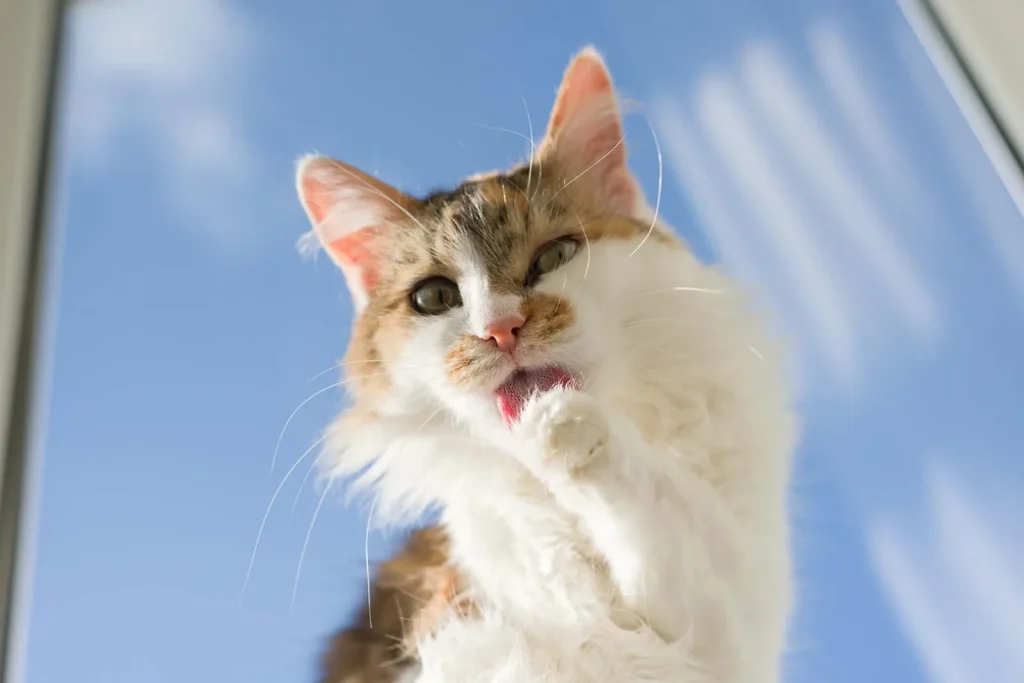Positive Training Techniques for Dogs and Cats

Understanding the Power of Positive Training
In the realm of pet training, the approach you choose can significantly impact your furry companion’s behavior and well-being. Positive training techniques have emerged as a popular and effective means to teach dogs and cats desired behaviors while fostering their emotional health. These methods emphasize rewards over punishments, creating a strong bond between owner and pet.
- Encouragement Over Correction: Traditional training methods often focus on correcting undesirable behavior, relying heavily on punishment, which can lead to fear or anxiety in pets. Conversely, positive training emphasizes encouraging good behavior. By recognizing and rewarding your pet when they exhibit desired behaviors, such as sitting on command or not jumping on guests, you reinforce those behaviors, making it more likely they will occur in the future.
- Diverse Techniques: Positive training encompasses various techniques that utilize rewards as a means to instill behaviors. Clicker training, for example, involves a small handheld device that makes a distinct “click” sound when your pet performs a correct action. This sound serves as an immediate reward signal, allowing pets to make a clear connection between their behavior and the reward. Additionally, reward-based incentives such as treats, praise, or playtime are essential, as they appeal to a pet’s motivation and help strengthen the learning process. Name recognition is another fundamental aspect—when pets learn to respond to their names, it opens pathways for further commands and deeper engagement with their owners.
- Inclusive for All Pets: While positive reinforcement training is often synonymous with dog training, these approaches are equally effective for cats and other pets. Many owners have successfully employed positive techniques to engage their felines in activities ranging from simple commands to complex tricks. These methods promote bonding through play and reduce stress, making them ideal for any household.
Utilizing these methods not only promotes obedience but also nurtures a trusting and loving relationship between pet and owner. Research suggests that pets trained using positive reinforcement exhibit greater confidence, lower anxiety levels, and are more enthusiastic about learning. This nurturing approach to training allows pets to grow and develop in a healthy environment, ultimately equipping them with the tools to navigate various situations both social and environmental.
As pet owners in the United States delve deeper into these revolutionary training techniques, they unlock doors to a happier, well-adjusted household. For instance, many veterinarians and animal behaviorists advocate for positive training, pointing to widespread improvements in pets’ behavior when implemented correctly. Incorporating this style into daily routines also results in reduced behavioral issues such as barking, scratching, or clinginess, creating a more harmonious living space.
By committing to this compassionate training philosophy, pet owners embark on a journey filled with joy and mutual understanding. Such a focus on positive interactions not only transforms the training process but also contributes to the overall well-being of the pet. It is time to revolutionize your training routine into a rewarding experience that benefits both you and your beloved companion!
LEARN MORE: Click here for valuable insights

The Core Principles of Positive Training Techniques
At the heart of positive training techniques lie fundamental principles that stand in stark contrast to traditional methods. Understanding these core concepts enhances the effectiveness of training, paving the way for a more enriching and enjoyable experience for both pets and their owners. Engaging with your furry friend using these principles fosters a deeper connection while reinforcing behaviors that strengthen your relationship.
- Focus on Timing: Timing is crucial in positive reinforcement. Rewarding your pet immediately after they complete a desired behavior helps them establish a clear connection between their action and the reward. Whether it’s giving a treat straight after your dog sits on command or offering praise when your cat uses the litter box, prompt rewards are essential for effective learning.
- Consistency is Key: Consistency in commands and rewards helps to avoid confusion. Each family member should use the same cues when training your pets to ensure they receive clear communication. For instance, if everyone uses the command “shake” for getting a paw, your dog will learn faster if all interactions promote that same action.
- Manage Expectations: Setting realistic goals is an integral part of the training process. Dogs and cats learn at different paces, and factors such as breed, age, and temperament heavily influence their receptiveness. Therefore, practice patience and celebrate small successes along the way to keep both you and your pet motivated.
In addition to these principles, the selection of reward types plays a pivotal role in the training process. While treats are often the most common incentive, other rewards can include verbal praises, toys, or affection. Experimenting with different types of rewards can help discover what best motivates your pet. For example, a dog may respond well to praise and playtime, while a cat might find treats more enticing. Personalizing rewards to fit your specific pet encourages positive behaviors even further.
Moreover, integrating play into training sessions significantly amplifies the enjoyment factor. By transforming training into a game, pets are more inclined to engage actively and respond positively. Activities such as hide-and-seek with treats or fetch can become valuable tools for reinforcing commands in an enjoyable manner. This makes training less of a chore and more of a bonding activity, fostering trust and affection between pet and owner.
Positive training techniques not only produce well-behaved pets but also empower them. By providing animals with the skills they need to navigate various scenarios, owners can equip their pets with tools that enhance their confidence and comfort. This approach is especially important for young animals, who are just beginning to experience their environments. For example, establishing good habits early on, such as obedience and calmness during travel, can help avoid behavioral issues as a pet matures.
Ultimately, utilizing positive training techniques reshapes the training landscape. It is an investment in the emotional and psychological well-being of your pets, setting the stage for a loving and engaged relationship. As pet owners, embracing these methods not only ensures the effective teaching of skills but also enhances the joy and satisfaction of sharing a life with a pet.
When it comes to training your furry companions, positive training techniques for dogs and cats have gained immense popularity due to their effectiveness and humane approach. Unlike traditional training methods that may rely on punishment, positive reinforcement focuses on rewarding good behavior, creating a harmonious bond between pets and their owners. This method not only encourages desirable actions but also enhances a pet’s confidence, leading to a more well-adjusted animal.
One of the key advantages of using positive reinforcement is that it fosters a joyful learning environment. Pets are more likely to engage and participate when they associate training sessions with positive outcomes. This could mean receiving treats, praise, or even playtime, making the process enjoyable for both the animal and the trainer. Moreover, studies have shown that animals trained with positive methods often retain learned behaviors longer compared to those trained with aversive techniques.
Additionally, positive training techniques are adaptable to various situations, whether it’s teaching basic obedience commands, addressing behavioral issues, or simply reinforcing good habits. This flexibility means that pet owners can customize their training sessions to suit the individual needs of their dogs or cats, enhancing the effectiveness of the training.
| Advantage | Description |
|---|---|
| Improved Behavior | Reinforces good habits, leading to fewer behavioral issues. |
| Stronger Bond | Creates trust and a deeper emotional connection between pet and owner. |
This method not only enhances a pet’s learning experience but also aligns with the overall well-being of pets. By embracing positive training techniques, owners play a crucial role in developing a loving and responsive environment for their beloved animals.
DISCOVER MORE: Click here to learn about age-specific pet nutrition
Building a Stronger Bond Through Positive Interactions
Positive training techniques not only focus on teaching commands and behaviors but also play a crucial role in enhancing the bond between pets and their owners. One of the most effective methods in this realm is socialization. This practice involves exposing your pet to various environments, people, and other animals in a controlled way. Proper socialization is key for both dogs and cats, as it helps them develop skills to interact confidently and appropriately in different situations. For example, early socialization in puppies, usually between 3 to 14 weeks of age, can significantly prevent behavioral problems as they grow, such as fearfulness or aggression. In cats, gradual exposure to new experiences can reduce anxiety and allow them to thrive in diverse settings.
Another vital aspect of positive training involves shaping behaviors. This technique allows pet owners to encourage a desired behavior by breaking it down into smaller, achievable steps. Through a series of incremental cues and rewards, you can guide your pet towards a complete behavior. For instance, if you’re teaching your dog to roll over, start by rewarding them for simply lying down, then gradually introduce the movement that leads to the full roll. This approach not only makes learning manageable for your pet but also boosts their confidence as they achieve each small success.
- Clicker Training: Clicker training is another positive reinforcement technique that has gained widespread popularity. The clicker serves as a marker that signifies the exact moment a pet performs a desired behavior, followed by a reward. This medieval method of communication helps the pet understand which actions are being rewarded, making it a powerful tool for modifications in behavior.
- Redirecting Undesirable Behaviors: Instead of simply reprimanding a pet for undesirable behavior, positive training encourages redirection. For example, if your dog is chewing on your favorite shoes, redirect their attention to a designated chew toy instead. By offering a suitable alternative, you not only dissolve the problem but also reinforce positive behavior through rewards when your pet engages with the right object.
- Setting Up a Positive Environment: Creating a positive environment goes hand-in-hand with effective training. Ensure your training sessions are brief but engaging, ideally around 5-10 minutes for dogs and even shorter for cats. Consistently highlighting positive interactions will boost your pet’s enthusiasm, making them more receptive to learning and less likely to associate training with stress.
The importance of patience and trust cannot be underestimated in any positive training approach. Establishing a sense of safety and trust with pets will lead to responsive behavior. Dogs, for instance, thrive on their owners’ feedback and are more likely to engage in training when they feel secure in the environment. Meanwhile, cats, known for their independent nature, often need gentle encouragement and a non-threatening atmosphere. Give them time to explore new commands or tricks at their own pace to foster a more profound and positive learning experience.
Moreover, environmentally enriching a pet’s surroundings can work hand-in-hand with training techniques. Incorporating puzzle toys, interactive play, or even teaching your pet tricks helps stimulate their minds, leading to happier, well-adjusted behavior. As they learn new skills and problem-solve, their confidence can grow, improving their overall behavior and attitude towards training.
With a focus on communication and understanding, positive training techniques offer a holistic approach to raising well-mannered pets. As owners embrace these methods, they uncover a world of opportunities to enhance the relationship they share with their dogs and cats, creating a fulfilling companionship based on love, respect, and trust.
LEARN MORE: Click here to discover how aging impacts your pets
Conclusion
In summary, positive training techniques for dogs and cats present an effective and compassionate approach to pet training that significantly deepens the bond between owners and their pets. By utilizing methodologies such as socialization, shaping behaviors, and clicker training, pet owners can foster an environment where learning is positive and stress-free. This not only facilitates the development of desired behaviors but also builds trust and communication, essential elements for a thriving relationship with your furry companions.
Moreover, redirecting undesirable behaviors and establishing enriching environments contribute to a well-rounded training experience, ultimately leading to a more engaged and sociable pet. By embracing patience and understanding, you allow your pets to explore their abilities at their own pace, promoting confidence and security. It’s crucial to remember that the journey of training is a shared learning experience, transforming challenges into opportunities for connection and fun.
As pet owners in the United States and beyond adopt these techniques, they are not merely training animals; they are nurturing happy, well-adjusted companions who bring joy, love, and enrichment into their homes. The emphasis on positivity in training reflects broader values of empathy and respect, establishing a foundation for lifelong companionship. If you are looking to enhance your relationship with your dog or cat, consider delving deeper into these positive training techniques, which can lead to a more harmonious and fulfilling pet ownership experience.



